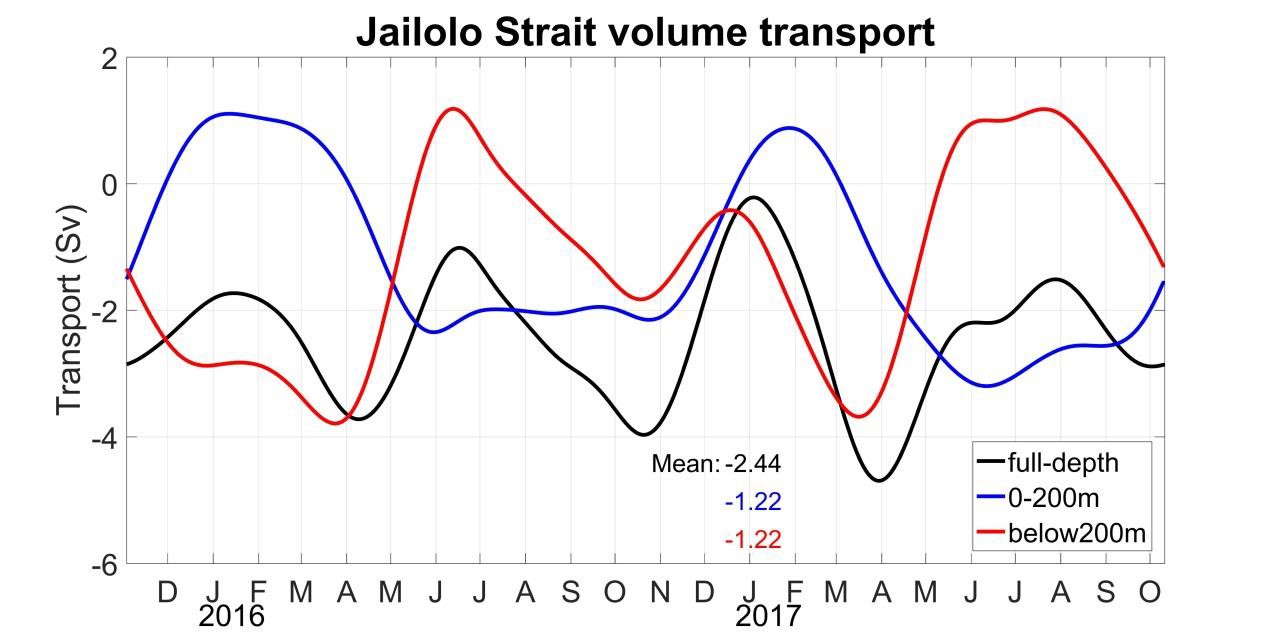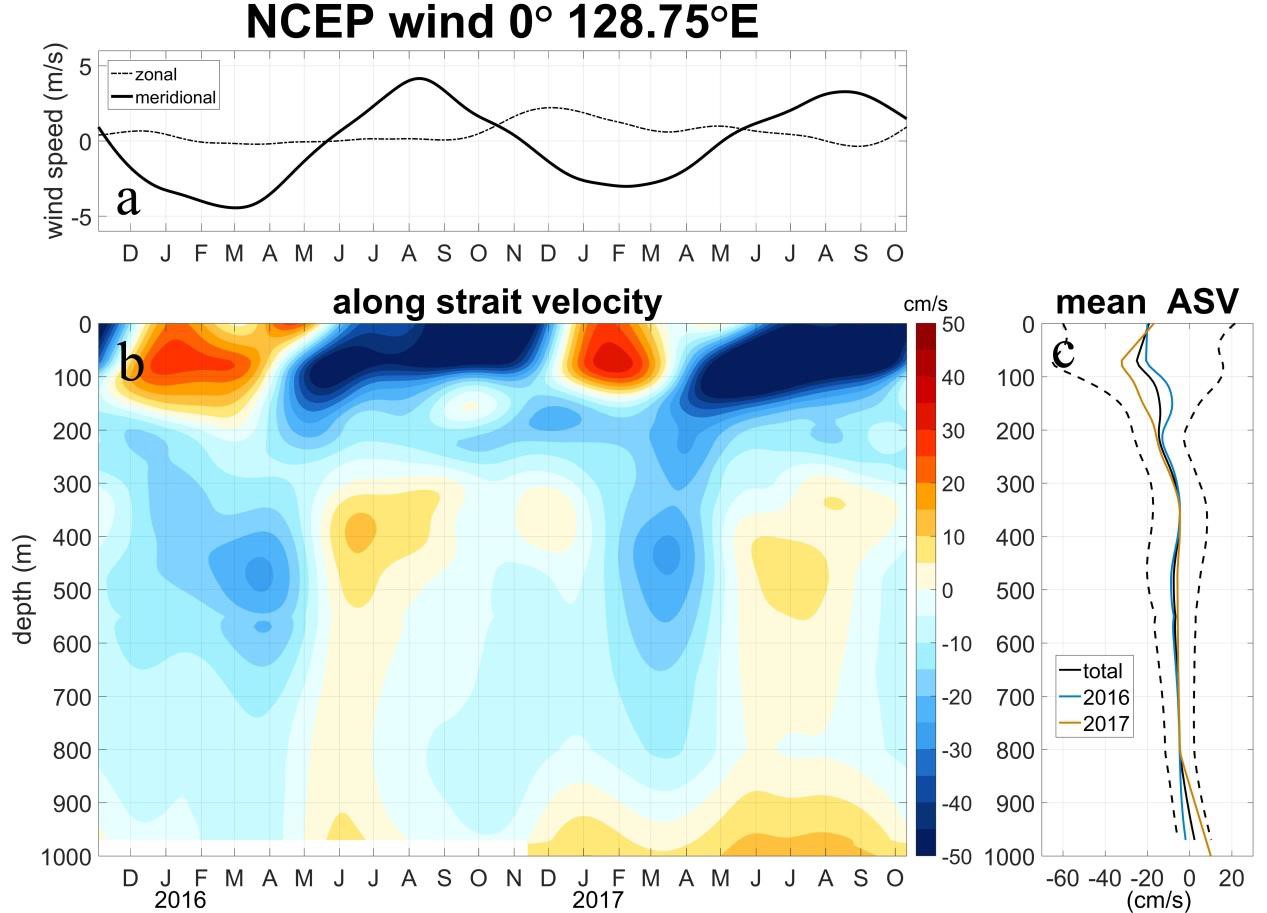The observation challenges the existing studies suggesting a major inter-basin wave guide from the western Pacific Ocean through the Halmahera Sea to the west coasts of the New Guinea and the Australia continent and to the eastern Indian Ocean. Focusing on the two consecutive years of moored observation in the Jailolo Strait from November 2015 to October 2017, the transport of the Halmahera Sea was directly measured for the first time history, indicating that the 2-year mean transport of the Jailolo Strait is estimated to be -2.44 Sv ± 0.42 Sv to the Indonesian seas based on the mooring data. The largest uncertainty may exist in the horizontal extrapolation, which, however, is supported by the SADCP measurements and high-resolution ocean model simulations.

Figure 1. Volume transports of the Jailolo Strait in upper and lower layers
At the same time, the analysis also covers the mean along strait velocity, which is shown to flow towards the Indonesian Seas throughout the water column except at the bottom, where a northward flow during 2017 is observed. The variability of the sub-tidal currents is found to be characterized by a two-layer system with dominant annual cycles. In the upper 200 m, the currents are northward to the Pacific Ocean during December through April, but stronger and southward for the rest of the year. Below 200 m, the currents are also dominated by an annual cycle but with an opposite phase.

Figure 2. 120-day low passed and mean along strait velocity (ASV) of the 2-year mooring measurements in the Jailolo Strait of the Halmahera Sea
The results indicate that the pressure difference between the far equatorial western Pacific Ocean and the Indonesian Seas drives the variability of the transports through the Jailolo Strait, which is diagnosed by the satellite sea surface height (SSH) and ocean bottom pressure (OBP) data. Especially, the seasonal variability of the transports in both upper and lower layers is dominated by the annual cycle of SSH in the Indonesian Seas.
Besides, the interannual transport in the Jailolo Strait during the 2015-2016 super El Nino is found to be much smaller than the seasonal cycle based on the mooring observations, suggesting that most of El Nino signal did not propagate into the Indonesian seas through the Halmahera Sea.
Li, X., Yuan, D., Wang, Z., Li, Y. et al. (2020). Moored observations of transport and variability of Halmahera Sea currents. Journal of Physical Oceanography, 50(2), DOI: doi.org/10.1175/JPO-D-19-0109.1.
IOCAS PIO: Ms. YANG Fengfan
Phone: 86-532-82898623
E-mail: fengfanyang@qdio.ac.cn

